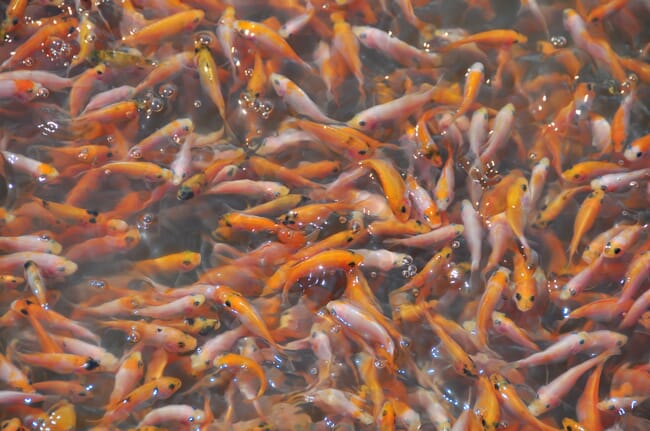Ten on-the-job trainees (OJTs) at Southeast Asian Fisheries Development Center's aquaculture department (SEAFDEC/AQD) searched for key questions within fish farmer communities on Facebook and researched for answers using SEAFDEC/AQD’s vast repository of digital publications.
“Fish farmers have formed large online communities on Facebook where they ask questions, share experiences, and sell their products. We wanted to try reaching them there with quality information,” said Rex Delsar Dianala, officer-in-charge of SEAFDEC/AQD’s development communication section, which is tasked with producing and disseminating information materials.

The OJTs, all biology majors of the University of the City of Manila (PLM), focused on Filipino farmer groups such as “Tilapia Farming Philippines” which as of writing has 43,800 members, “Freshwater Fish Farming in the Philippines” (38,600 members), “Freshwater prawn {ulang} philippines” (8,200 members), and “Tilapia and Hito Farming” (8.000 members).
Between 5 and 29 July 2021, the OJTs provided at least 320 farmers with answers, complete with links to reliable references and downloads from organisations such as SEAFDEC/AQD, the Food and Agriculture Organization (FAO) and the Bureau of Fisheries and Aquatic Resources (BFAR).
“We were astounded by the quality of the answers given by the students from PLM,” remarked Edgar Vincent Antolino, the SEAFDEC/AQD training assistant who supervised the OJTs, in a press release. “They were able to synthesise, customise, and translate answers to Filipino so the farmers can better understand.”
For example, a member posted in one Facebook group asking how many tilapia fingerlings he could stock in his 500 square metre pond.
While one co-member was quick to respond with an offer to supply canvas lining, another commenter outrageously advised to stock 100,000 and proceeded to state that he had available fingerlings to sell.
Other more helpful members said he should stock “5 pcs per/sq. meter”, another says “2k”, another briefly comments “500 x 5.”
Meanwhile, Genica de Lara, one of the OJTs commissioned by SEAFDEC/AQD to answer questions, comprehensively explained, in Filipino, the difference between extensive, semi-intensive and intensive systems and computed the proper number of fish for the farmer’s pond.
“Extensive: 500–1000 fingerlings, semi-intensive: 1,500–2,000 fingerlings, intensive: 2,500–5,000 fingerlings,” she wrote after emphasising the importance of proper pond preparation, feeding, and water quality. Then, she gave links to two freely downloadable tilapia manuals published by SEAFDEC/AQD.
In a separate post, another user asked whether tilapa grow significantly faster in either mud or concrete ponds.
Matt Tua Agbulos, another OJT from PLM, explained to him in detail three advantages in using earthen ponds and four advantages of concrete ponds and provided three links for additional information.


